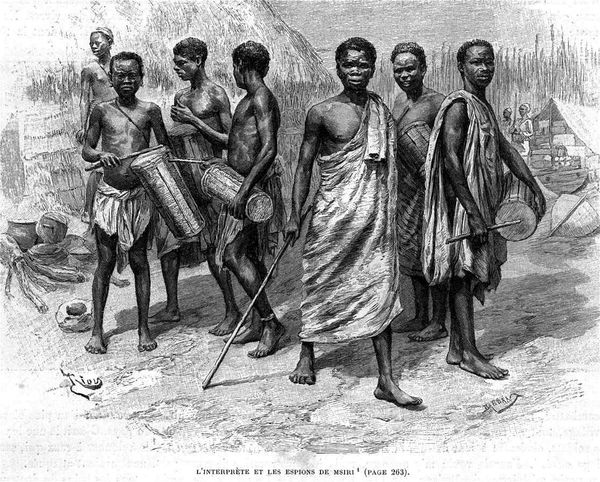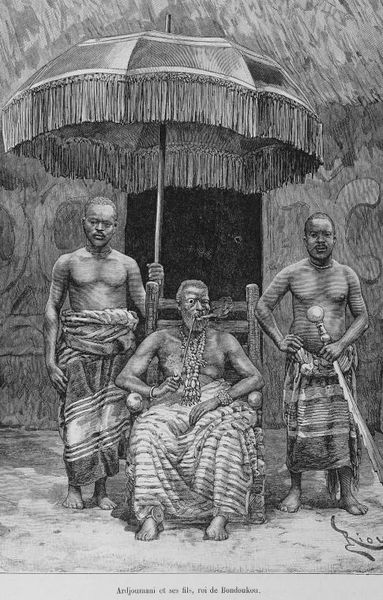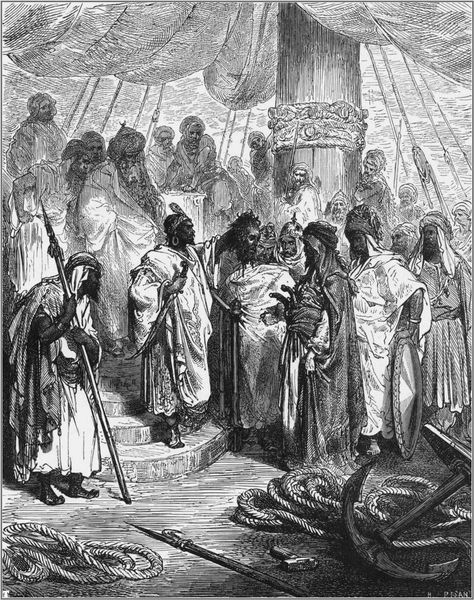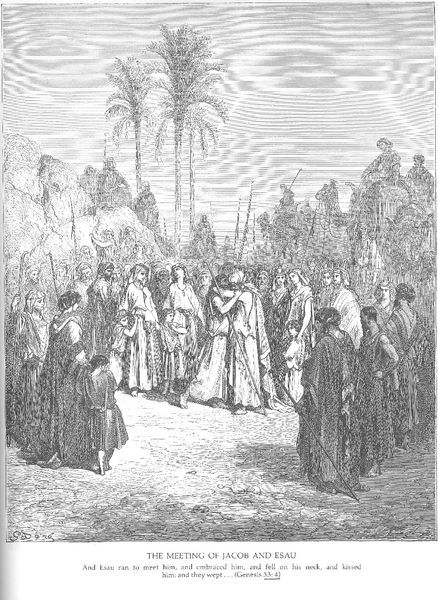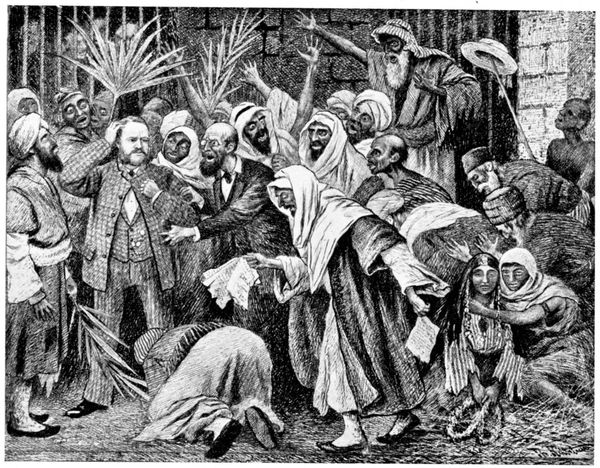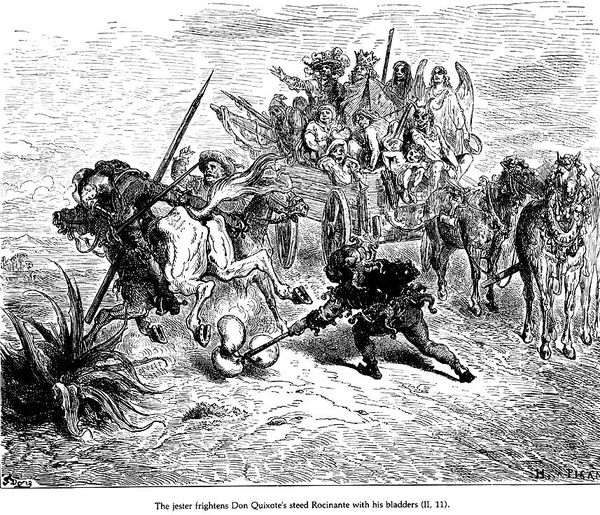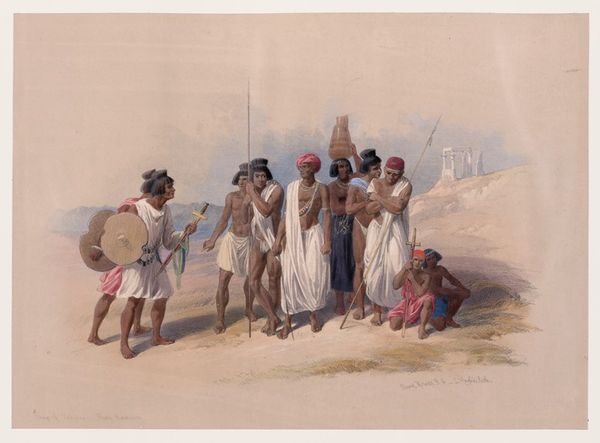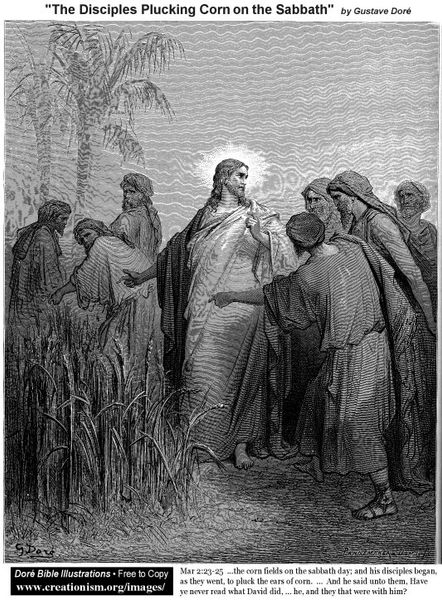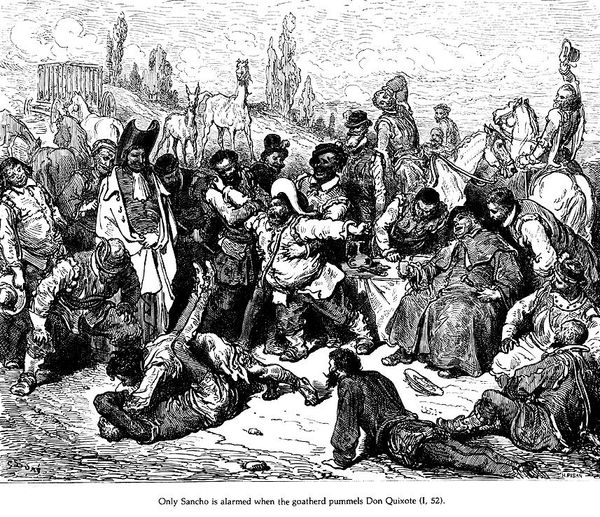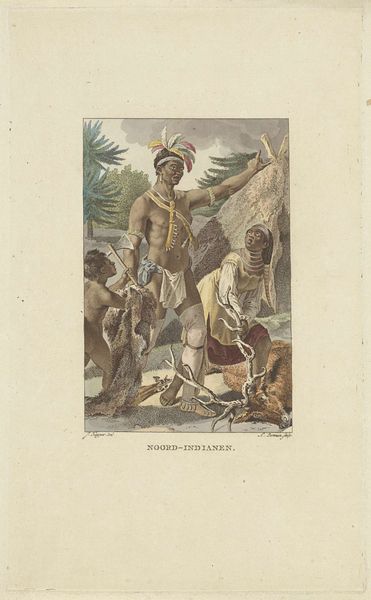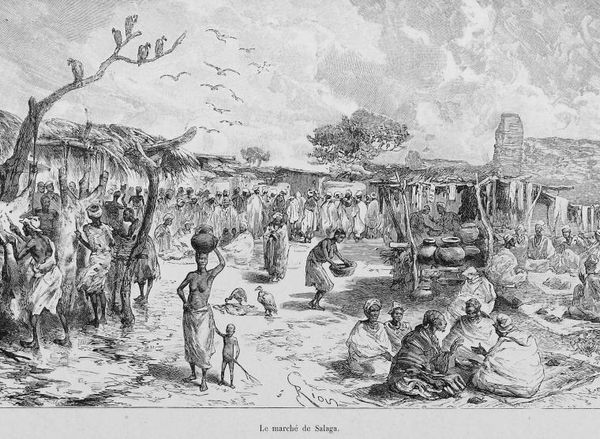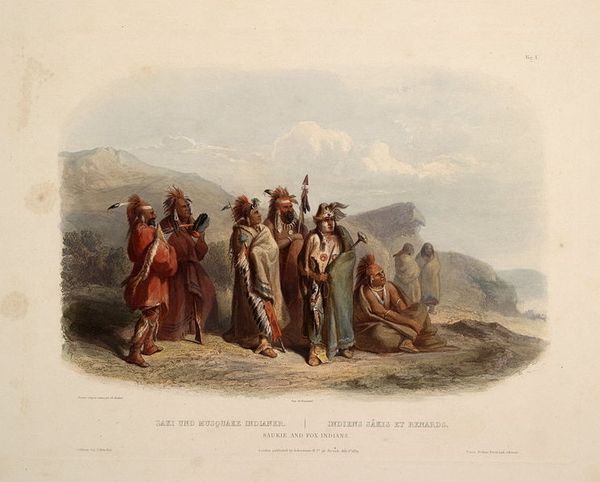
Louis-gustave Binger of French West Africa in 1892 Treaty Signing with Famienkro Leaders, in Present Day N'zi-comoé Region, Côte D'ivoire 1892
0:00
0:00
drawing, print, ink, engraving
#
portrait
#
african-art
#
drawing
#
narrative-art
# print
#
charcoal drawing
#
ink
#
charcoal
#
engraving
Copyright: Public domain
Curator: Let’s examine this print from 1892 by Edouard Riou, depicting "Louis-gustave Binger of French West Africa in 1892 Treaty Signing with Famienkro Leaders, in Present Day N'zi-comoé Region, Côte D'ivoire.” The medium appears to be engraving, ink, and charcoal on paper. Editor: It’s a very stark image. The composition emphasizes this clear power imbalance, with the lone European figure and his weapon visually separated from the assembled African leaders. Curator: Yes, it's important to note the context of its creation. This image likely served as a document justifying and glorifying French colonial expansion. The labor of the engraver becomes instrumental to disseminating a particular worldview, effectively becoming part of the colonial machinery. Editor: Absolutely. The “treaty signing” is presented as a civil act. The details that are intentionally excluded such as acts of violence are significant. Where are the laborers? The exploitation of resources? What considerations or consultations are these "leaders" receiving to make them actually equipped to sign something? The print normalizes imperial control. We're looking at visual propaganda manufactured through careful choices in both subject and medium. Curator: Observe how Riou employs light and shadow, shaping perceptions of the subjects. The clothing, postures... consider the labor involved in production – from mining minerals to the factories churning out European garb in comparison to hand-woven traditional fabrics in Cote D'ivoire, a whole economy structured on this disparity. This informs what the signing and agreements would have been materially promising and also materially costing. Editor: Precisely. The seemingly neutral, observational style further reinforces its insidious nature. These documents naturalize European supremacy and African subjugation, obscuring the violence inherent in colonial projects under a guise of legal, formalized agreements. Note the indigenous peoples pictured: most are depicted standing while Louis-Gustave Binger stands among them and is notably the only armed individual visible in this rendering of an event taking place on land that is not his own. Curator: So the print isn't just a historical record, but a meticulously crafted object complicit in colonial narratives. Thank you, this perspective challenges us to see it as an artefact produced through certain industrial means to solidify particular interests. Editor: Thank you! Hopefully, these layered readings offer you a more complete experience of what could be the true historical narrative behind these processes.
Comments
No comments
Be the first to comment and join the conversation on the ultimate creative platform.
